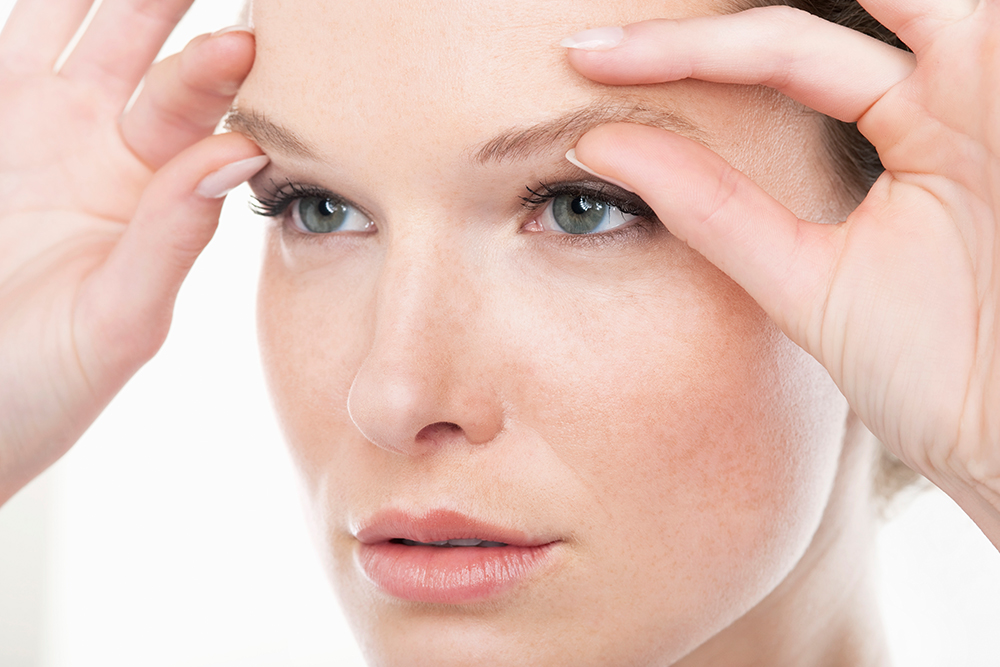In the quest for facial rejuvenation, the periorbital region—the area encircling the eyes—is a focal point. As time passes, the skin in this area undergoes changes, contributing to a tired, aged appearance. Today, individuals seeking a refreshed look have various options to choose from, including whether to get a browlift or eyelift. However, with a plethora of choices available, understanding the nuances of each treatment is crucial to making the best choice.
“All of procedures, a browlift, ‘Botox browlift’ and an eyelift, have the potential to improve the appearance of the periorbital area around the eye,” says Boca Raton, FL oculoplastic surgeon Steven Fagien, MD. “It’s important for patients and consumers to be aware of the differences, because they don’t do the same thing.”
Exploring the Options: The “Botox Browlift”
A “Botox Browlift,” a nonsurgical option, involves the use of neuromodulators to shape the brows and achieve a temporary brow lift. “By selectively wreaking the brow depressor muscles, the muscles that elevate the brow take over and create a browlift,” explains Woodbury, NY office, oculoplastic surgeon David Schlessinger, MD. “This works best on younger people without a lot of laxity. The results usually begin within a few days of the injections and last several months. Consistent neurotoxin injections will help keep the brow in place and delay the need for a surgical browlift.”
“You can lift different parts of the eyebrow using neurotoxin, but you need to understand the muscles involved,” says New York plastic surgeon Mokhtar Asaadi, MD, who likes the personalized approach injections afford. “There are muscles around the eyes which can bring down the whole eyebrow. There are also muscles between the eyebrows and the upper nose that bring down the inner part of the eyebrow when they contract. The only muscle that raises the eyebrow is the frontalis muscle in the forehead. So, knowing the anatomy helps us inject in specific areas to get the best results.”
Making It Permanent: Browlift or Eyelift
In contrast, browlifts are surgical procedures aimed at achieving a permanent elevation of the eyebrows. However, eyelid surgery alone does not lift the eyebrows, unless a concurrent browlift is performed, says Dr. Fagien. “This makes eyelid surgery the surgery of choice for people who are happy with their current brow position, comprehending the differences, and meeting the criteria for blepharoplasty.”
Dr. Schlessinger says sagging and drooping eyelids and brows can give a worn-out and aged appearance. He states that we should consider the upper eyelid and brow as a connected aesthetic area. “When evaluating patients with droopy upper eyelids, it’s necessary to consider the brow as well. If there’s brow ptosis or drooping, solely performing an upper blepharoplasty might not yield the desired outcomes. In my practice, I incorporate some form of browlift for over half of my surgical patients.”
Combining Treatments
Dr. Fagien points out that treatments similar to neurotoxins can complement surgeries by weakening brow muscles that pull down, helping to maintain the lift. Using neuromodulators with energy-based devices can lead to longer-lasting effects. “Technology in the nonsurgical world has advanced plastic surgery and given patients a great option to rejuvenate themselves without undergoing surgery,” says Louisville, KY plastic surgeon Chet Mays, MD. ”One procedure that I like for a nonsurgical browlift is AccuTite by InMode. It uses radiofrequency energy to cause lifting of the brow and tightening of the eyelid skin. It is an in-office procedure that can give a lifted brow within six weeks with minimal downtime.”
Dr. Asaadi emphasizes the effectiveness of modern surgical techniques in achieving precise results. “During eyelid surgery, especially for malar bags and festoons, I usually raise the outer part of the eyebrow about 90 percent of the time. This not only lifts the eyebrow but also smooths the skin on the outer upper eyelid. It’s a quick and effective procedure.”

















